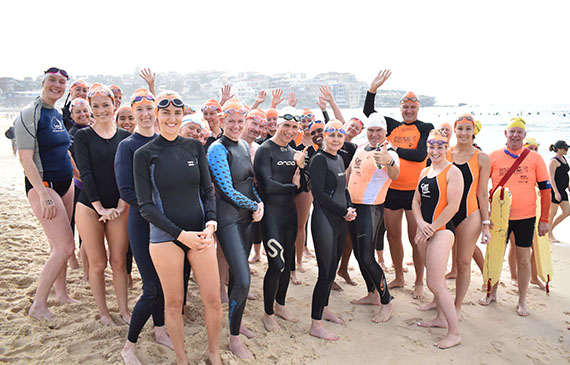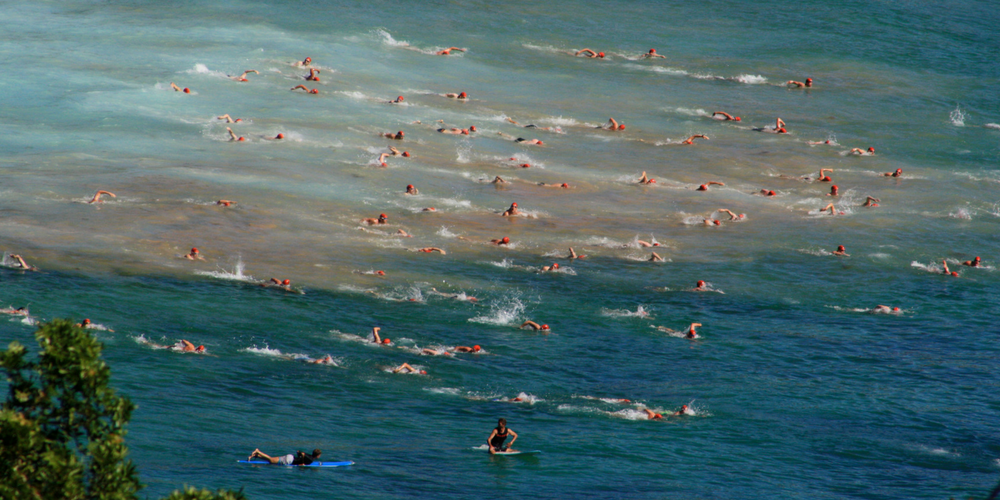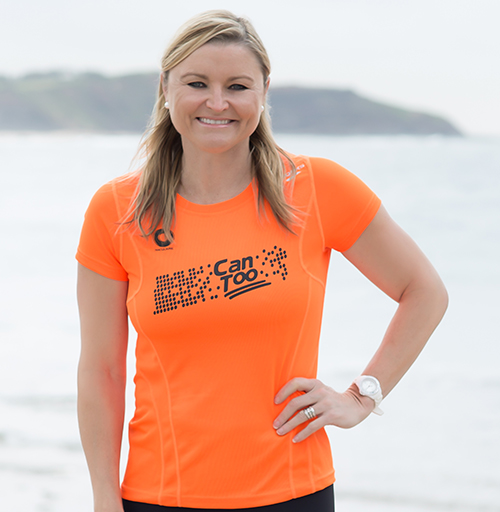
Sighting is an integral part of ocean swimming. Being able to sight the path ahead of you, will keep you on course, both minimising your time in the water and your level of exertion.
Sighting is the term used when looking ahead of you in the ocean. Sighting is used by ocean swimmers to ensure they haven’t deviated off course. To sight correctly you should use the landmarks around you to help you monitor your course: these can be lighthouses, buoys, buildings or any other object that doesn’t move.
The correct sighting technique may take a little time to perfect; however your arms and race time will thank you, once you have mastered the art of sighting.
As a general guide, sight every 10 – 12 strokes to ensure you’re on track. Depending on the ocean conditions, you may need to sight more regularly. If you’re drafting on another swimmer’s feet, you’ll still need to sight, don’t rely on their navigation.
Three easy steps to remember how to sight effectively:
- Use the mantra, Lift – Look – Breath. Sighting is easiest when you are breathing to one side. As your breathing arm descends into the first part of the stroke, lift your head and look ahead. You only need to lift your head so that your goggles are above the water, just like a crocodile looks ahead. You won’t be taking a breath here. When your head returns to the water, turn your head to take a breath.
- Look for Landmarks. To ensure you’re on course, try to line the buoys up with a landmark that is easy to see. Buoys are often hard to see in bigger waves, so landmarks are easier to see from the ocean. Obviously if you’re swimming towards the open water, this won’t work. In this case, you’ll probably need to sight more regularly.
- You’ll also want to sight when returning to shore to ensure that you’re aware of waves coming behind you. To sight backwards, you’ll need to look behind you as you take your breath. Back breathing is essential to catching waves. Waves are your friend for returning to shore. If you’re able to catch one they will make your journey back to shore much quicker and save valuable swimming energy.
A quick reminder on how to breathe correctly.
You should be starting to turn your head as your breathing arm (the arm on the same side you’re taking a breath) is leaving your glide position. When your mouth and nose break the water look behind you to see what is coming towards you.
Always practice sighting in your pool sessions. Here are three sighting drills that will help improve your sighting skills.
- Crocodile Drill. Swim 25m with your head higher so that your goggles are above the water. The water level should be just above your nostrils. Breathe normally to the side, return to crocodile position after each breath. Swim the next 25m normally. There is another drill called Water Polo drill where your head is completely out of the water. This is not necessary for sighting unless waves are large.
- Sighting Drill. Sight (lift & look) every 6 – 8 strokes. Each time to lift, look at the diving blocks at the end of the pool or the lane sign.
- Back Breathe. Look behind you every 6 – 8 strokes. Each time you back breathe look at the diving blocks or lane sign.
Ocean swimming is an amazing sport, practice these tips to make your race even more effective as well as fun!
Get Professionally Coached Today!
The Can Too Foundation is an independent health promotion charity committed to funding cancer research and prevention.
We offer professionally coached training programs using qualified and experienced Coaches plus caring Mentors and Team Captains.
Can Too trains all levels, from beginners to more experienced athletes, in structured training programs tailored to specific physical challenges such as running races, ocean swims or trek challenges such as to the Camino de Santiago Trail and you can even choose your own event as a Can Too Beyond program.
Programs range from entry level distances such as 1km ocean swims, to 5km swim programs, through to advanced programs such as marathon 10km swims.
Have a look at all the upcoming Can Too programs to find your next goal!










